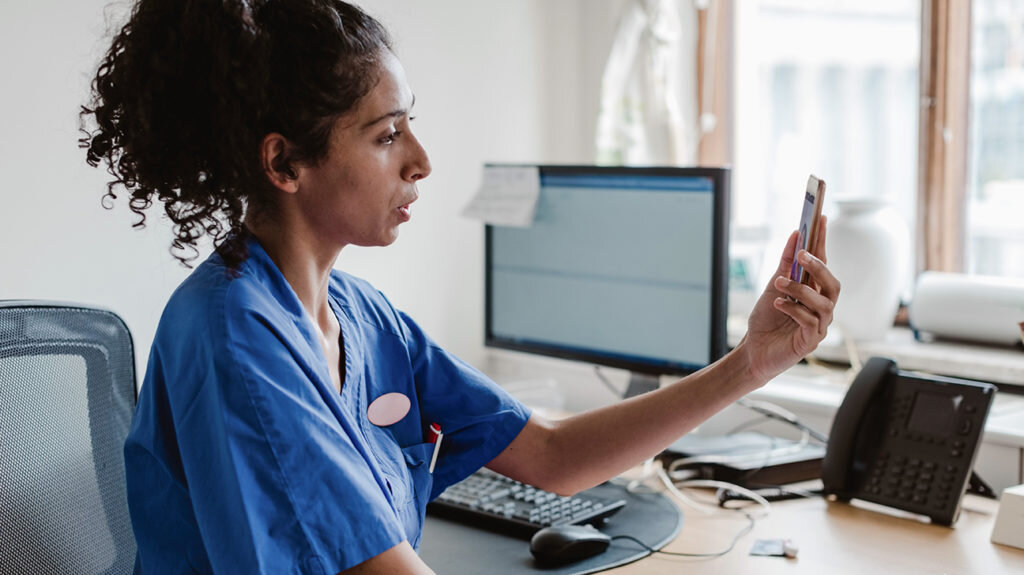Leveraging Shared Devices Between Employees
It makes sense that most Modern Healthcare facilities are looking to leverage shared devices between employees. In these fast-paced environments, critical information must be stored and shared in the most efficient means possible. A streamlined approach to supplying nurses, techs, and doctors alike with a shared tablet or computer is often critical. Of course, this presents a series of challenges for workers that don’t have the time to devote to learning the intricacies of new technology.
We often receive questions from healthcare providers about the best approach to managing shared devices with Microsoft Intune. Below you’ll find answers to common questions and concerns about shared devices in modern hospitals and care facilities.
How many users can share a device?
There’s no limit to total users. However, depending on the device hardware and applications, some experiences may be limited based on how you’re planning to share the device’s storage space threshold. Some applications require users to authenticate but do not account for the device being used in a shared capacity.
Picking the right devices for your program
Often, we’re asked which device is best to manage a shared device program in healthcare facilities, and there is no easy answer. Your group needs to consider its use case and determine your group’s goals. It is, however, more common to see Windows or iOS operating systems in place on shared devices in healthcare. You’ll find Android and macOS are less common.

What are the advantages and disadvantages of each device?
It’s sometimes tricky to compare the operating systems, and quite frankly, it is not exactly comparing apples to apples. Truthfully, a lot comes down to personal preference or business need. Mobile and desktop operating systems have different design principles and perform distinct tasks often independent of one another. The reality is that only a fraction of what can be achieved on desktop operating systems (Windows, Linux, macOS) can be achieved on mobile operating systems (iOS and Android).
For example, healthcare professionals are unlikely to use mobile operating systems to interface with an entire patient record, however, the mobile operating system is ideal for communicating on the go.
If we’re speaking of advantages in terms of risk aversion, Apple tends to have the edge. iOS devices allow for control of the entire ecosystem, from hardware to operating system. You are rewarded with a much better lifespan from the hardware. Devices are guaranteed to receive OS updates for a long time, ensuring that they stay secure. In short, Apple devices tend to be more secure than Android due to the control surrounding the devices ecosystem.
Can iPhones work in a shared capacity?
Yes, but it is largely contingent on the applications being used on the iPhone. These applications must be built considering multiple users working on the device (i.e. users that would need to login to the application with unique credentials and with sessions timing out after a period of non-use). Not all applications have this capability.

What about using iPads as shared devices?
Again, yes, iPads have a specific setting in which you can toggle the device to “shared mode.” This is specifically designed for shared designations and appropriate for hospitals and care facilities. For more specifics, check out Apple’s article on shared iPad device deployments here.
What about check-in, check-out?
Some Modern Device Management solutions provide “checkout” functionality for devices. This, however, is a non-native iOS functionality. The applications must be built in a capacity that is aware of the MDM capability and functionality. Applications built to interface with specific MDM solutions and their check-out facilities are limited. With a shared iPad, a session is unique to the users. It’s not so much a checkout but rather a login to the device where you’re presented with your own group of applications.

How can we maintain the battery life of shared devices and ensure they’re charging when not in use?
Many groups that are using shared devices programs typically keep devices that are not in use on commercial charging stands. In some instances, medical facilities will use smart lockers to charge and store devices between uses.
What are the best procedures to clean shared devices to ensure safety when transferring from one person to another?
One of the more commonly practiced solutions is to clean the shared device with a hospital-grade disinfectant wipe after each use. However, in recent years we’ve seen some more sophisticated solutions such as the UVone developed by LocknCharge. This product is meant to be used when shift nurses are handing off duties and comparing notes. The device disinfects a shared phone or tablet within 30 seconds using UV light.

Many Nurses and Clinicians are experiencing “pocket fatigue” from carrying personal phones, emergency pagers and other equipment. How can a shared device program help?
One of the main advantages of implementing a shared device program is eliminating the need for nurses and clinicians to carry multiple devices. When a device-sharing program is launched, it’s typically so that personal devices can be left in areas such as a nursing station when a professional is on the go. Most nurses and clinicians prefer moving through their care facilities with a single device. A shared device allows for viewing of patient information and dialing or accepting calls via VOIP. It eliminates the need to haul around an emergency pager, personal device, and a work device all at once.
Lab coats and scrubs are now being designed to carry shared devices as well. Some of the latest fashions include storage for iPad minis or shoulder straps to hold shared tablets.
Are shared devices secure?
Shared devices most certainly can and should be secure. However, to execute a successful shared-device program, careful planning is necessary for your implementation team.





